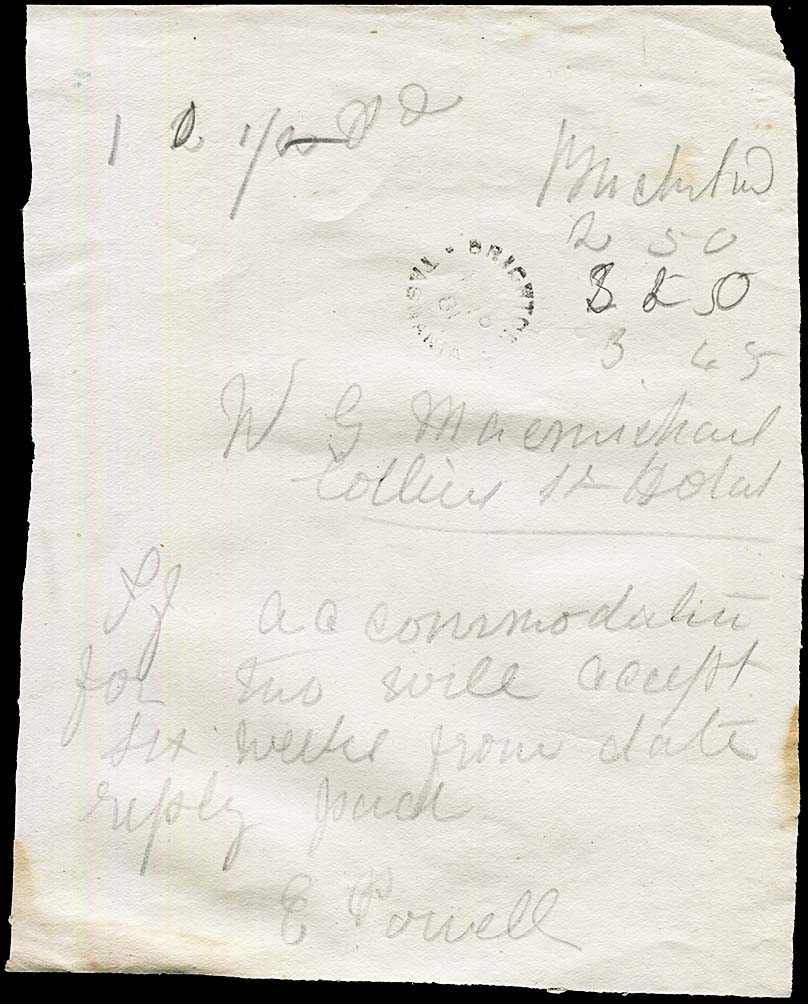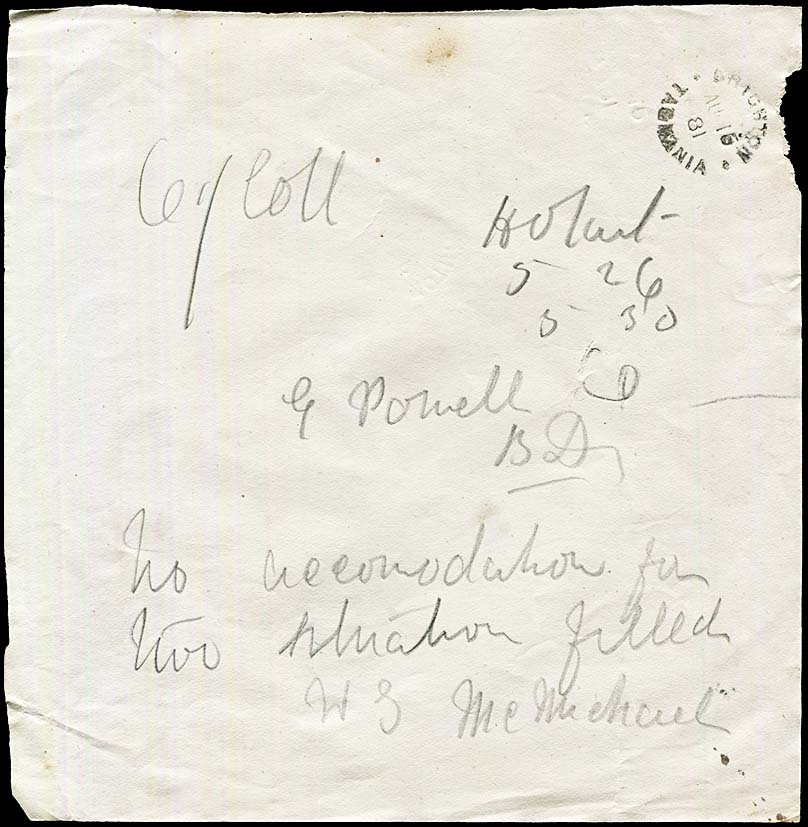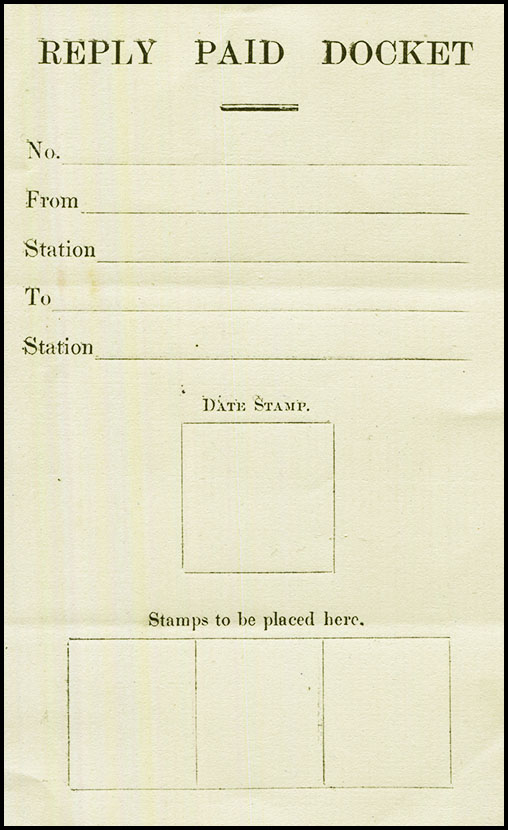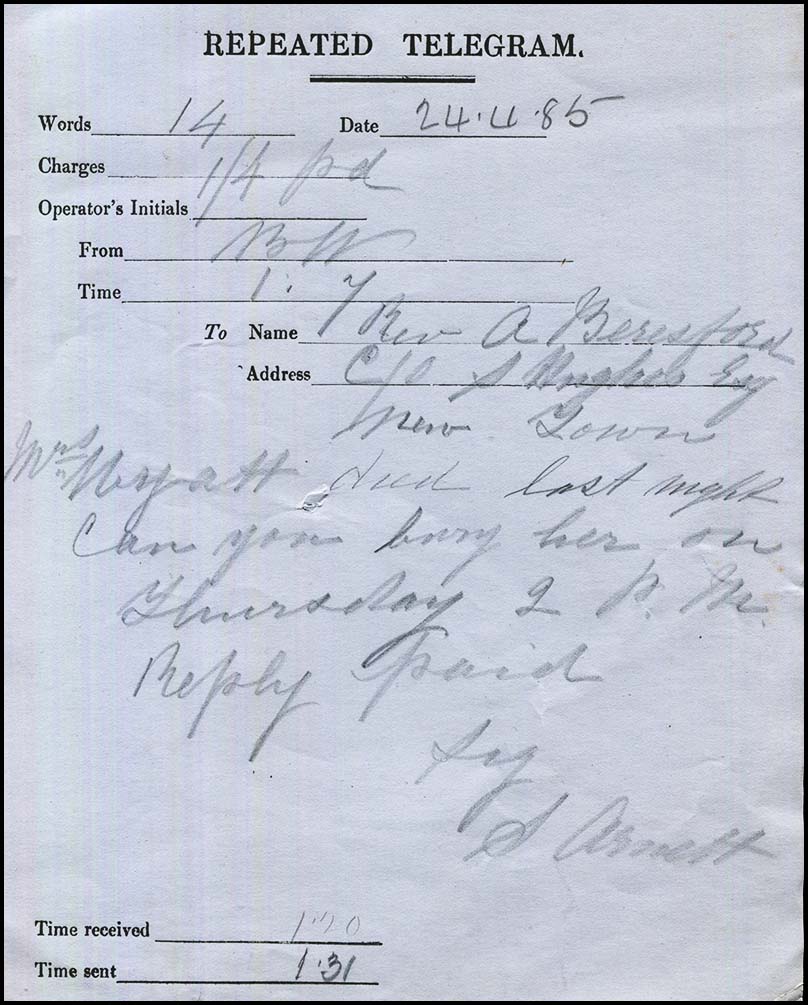Instructional marking - REPLY PAID.
- Australia 1901-1988
- New South Wales
- Queensland
- South Australia
- Tasmania
- Victoria
- Western Australia
- International
- Special aspects
For various reasons, the sender of a telegram might be wanting a reply to a telegram and so would pre-pay the cost of transmission for that reply. Perhaps the main reasons motivating the advance of the money required for a reply would be:
- to ease the burden on the recipient of a telegram of paying for a reply - especially under tragic circumstances;
- the responsibility for a telegram to reply rests with the recipient of a telegram and not with the sender of a reply.
In these circumstances, the words REPLY PAID or PRE-PAID or Answer Paid could be added to a message - generally at the end - and an indication of the cost pre-paid for the reply would also be added. The recipient would then use a transmission form to write a reply and the cost allowed debited by the Telegraph Office to the original telegram.
|
An amazing survivor pair of ad hoc forms is known for communication between Hobart and Buckland (via Brighton) on (Tuesday) 16 August 1881. The first communication of 10 wordsThe words REPLY PAID were never included in the word count. was from Buckland to Hobart: It is marked REPLY PAID. |
|
The second communication of 6 words was from Hobart to Buckland: It is marked COLLECT. |
|
Reply paid dockets.
Height: 15.5 cm; width; 9.7 cm. The form does not show the authority but as it comes from the Clemente collection, it is unambiguously Tasmanian. Provenance: |
Colonal Period: At some time - presumably in the late Colonial period - the Tasmanian Telegraph Office issued a special REPLY PAID form which made record keeping much more direct and easy to trace. Probably to ease administration in the Telegraph Office even further, a Reply Paid section was attached to the form with perforations and could be attached for filing. Only three of these REPLY-PAID forms is still known complete. At about the same time, the Department issued Docket books to all Offices to help with administering and monitoring the pre-paid telegrams being sent and received and to track Reply Paid telegrams and their associated payments. These books are a forgotten remnant and most people would never have even heard of them. The scan of a docket is shown at the left. They were issued in booklet form bound by adhesive at the top. Hence each docket could be easily removed. It is important to recognise that the docket indicates stamps could be used for payment of charges. Interim Period: In the Interim period, three forms headed COMMONWEALTH OF AUSTRALIA were issued. These had two halves - for the original message and for the reply respectively. One of the three forms was marked for URGENT rate. |
Examples of some Colonial Tasmanian telegrams which had been pre-paid are shown below:
|




